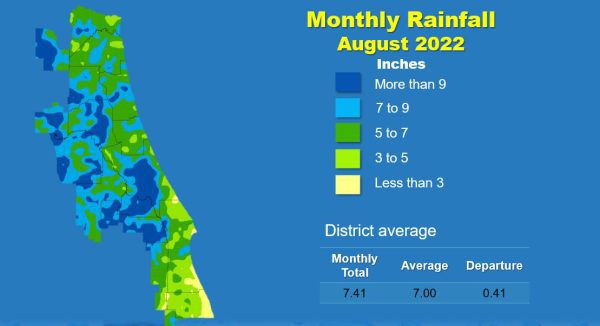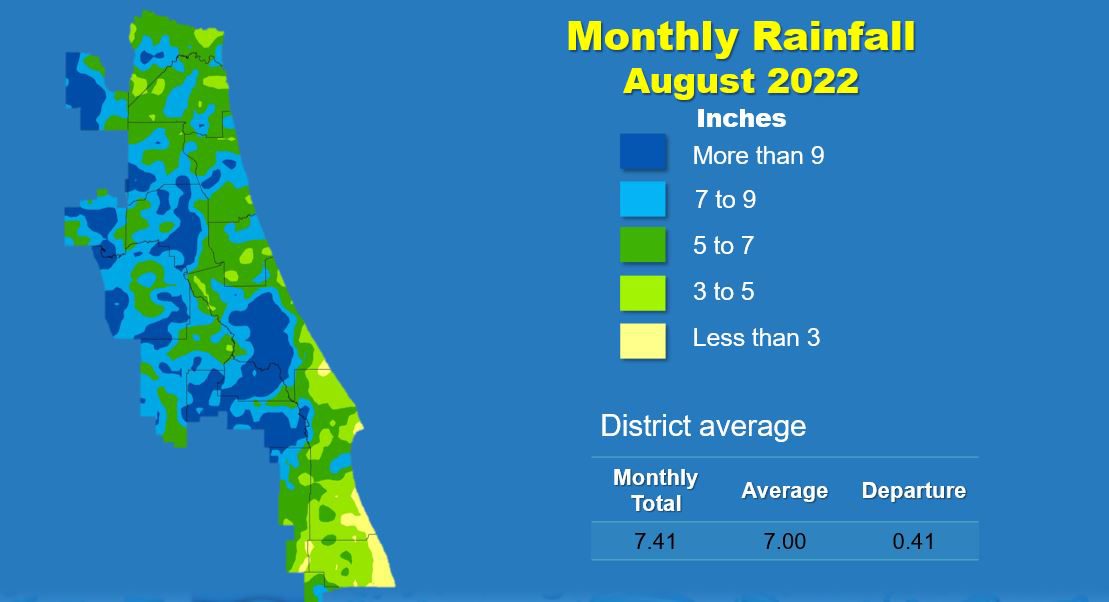
A St. Johns River Water Management District manager said Lake Brooklyn rose by 0.7 feet in August, bringing the lake’s level to 102.45 feet, which is near Brooklyn’s long-term average.
Michael Daly, a water resource data manager in the district’s Bureau of Water Resource Information, said rainfall in the central and northern portions of the district was unusually high during the month, with nine inches falling in some areas.
However, rainfall in the southern portion of the district, including southern Brevard County and Indian River County, remained low, prompting near drought conditions.
Daly said the August numbers line up with yearly averages, with Seminole County receiving 57.9 inches of rain over the past 12 months, and Okeechobee County receiving 39.5 inches. District-wide, average annual rainfall is 51 inches.
“So, we really have a divergence between the southern third and the northern two-thirds of the district,” he said.
Other highlights of Daly’s presentation during the Sept. 13 governing board meeting included:
Rainfall
Districtwide, August rainfall averaged 7.41 inches, which is 0.41 inches above the average for the month.
Districtwide, the cumulative rainfall total for the past 12 months is 50.07 inches, which is .94 inches below the long-term average.
Groundwater
Upper Floridan Aquifer conditions at the end of August were mostly in the normal range across the district, except in eastern Duval, northern St. Johns, and Indian River counties, where conditions were in the low range.
Groundwater levels expressed as a single districtwide index are at the 53rd percentile. This means that since 1980, aquifer levels have been higher than they currently are about 47 percent of the time.
Spring flows
The mean monthly flow at Silver Springs increased to 599 cubic feet per second (cfs), or 387 million gallons per day (mgd), which is a 6 cfs increase from July’s mean and remains in the normal range for this time of year.
At the Blue Spring station in Volusia County, the mean monthly flow was 147 cfs, or 95 mgd.
At Rock Springs, the monthly mean flow increased 1 cfs to 59 cfs (38 mgd), which is in the normal range for August.
Mean monthly flow at Wekiwa Springs increased to 70 cfs (45 mgd), which is in the high range for the time of year.



